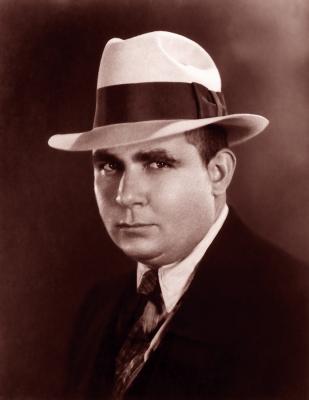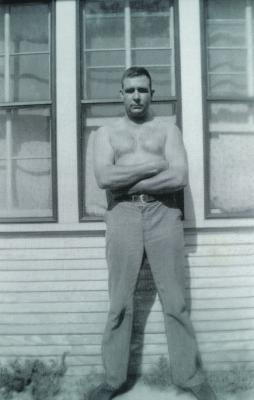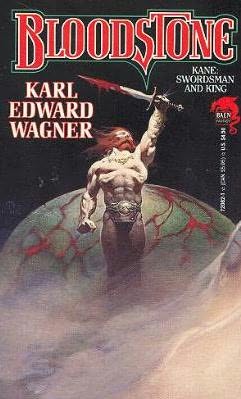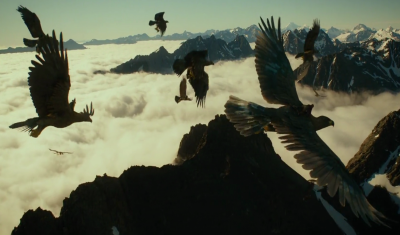I discovered Lovecraft only a few years ago but found that there is a real charm to his works. And the more I read, the more I realized that it’s really not a lot like the “Cthulhu Mythos” I’ve been hearing about for several years before. All the many horrific gods and the alien races with their billion year old wars barely make any appearance in his stories. Calling it the “Cthulhu Mythos” is particularly puzzling as he appears in only one story, which I admittedly found rather lacking, and so much more talk is about Yog-Sothoth, Nyarlathotep, Shub-Niggurath, and Dagon. There are some hints here and there that strange creatures have been to Earth in the distant past, but there isn’t anything about ancient histories of cosmic wars. Turns out Lovecraft never called it Cthulhu Mythos and all the other stuff was written by other people. And I have to say I find Lovecrafts own stories to be much higher quality because they don’t explain things and leave things vague. All the systemization, cataloging, and historic recording was the work of people who wanted to expand, but in my oppinion didn’t actually get what Lovecraft had been done. Still, most of Lovecrafts own writing is quite good and I still regard those stories very highly.
Some time later I came into contact with various videogames that had some kinship with the style I appreciated in Lovecrafts stories. The Japanese Silent Hill series, and the Ukrainian Stalker and Metro games. All these works have themes of desolation and decay, with protagonists who have to deal with events and environment which they don’t understand but have to deal with alone. And one thing that is really compelling about all of them is not what they explain about the events and environment, but what they leave highly vague and ultimately unexplained. The stories themselves have some interesting ideas, but it’s really everything around the characters and the plot that’s really selling it. In the sphere of games the common term is Lore, but it’s really the same thing as worldbuilding. Perhaps even a better term as the worldbuilding is really the creative process of making the world, while the Lore is the information that actually gets presented to the audience in the finished work. They don’t care so much how it’s done, just what the final result is.
Both the Stalker and Metro games are based on Russian science fiction novels and few people would think of Silent Hill as Fantasy. It’s simply Horror. (And the most terrifyingly, pants-shitting horror I’ve ever seen anywhere.) But they still intrigued me greatly as inspirational sources for the worldbuilding on my own Ancient Lands setting. Having really gotten into fantasy both with Dungeons & Dragons, rereading The Lord of the Rings, and playing the Warcraft games, my encounters with fantasy were highly dominated by works that explain absolutely everything down to the smallest level. The more minimalistic approach of both Lovecraft and Horror games, which also have a lot of Lore but it’s much more uncertain and speculative, seemed both more entertaining and intriguing. I later encountered other Japanese fiction like Neon Genesis Evangelion and Elfen Lied (the manga, the anime sucks), which also went a similar route and did very well, at least for me.
So when I heard of fantasy roleplaying games created with the express intend to evoke the bizarre and unknowable it had my curiosity. James Raggi is the posterboy for this movement with his Lamentations of the Flame Princess game, but there are plenty of others whose creative output is just as important. Raggi made the choice to call his game Weird Fantasty Roleplaying, which all things considered seems quite accurate. I haven’t read any of the Bas-Lag books, which are probably the most popular work by which the “New Weird” is identified, but from all I’ve heard about it there seems to be a clear kinship.
And over the last two or three years, I’ve learned a huge amount of things about creating fantasy that is based on and revolves around the inexplainable and extremely lethal. I came, I saw, and I learned. But I also find it to get really tiresome and also going overboard. The Weird Fantasy roleplaying material seems too deeply focused or even obsessed with the grotesque and being outright repulsive. Mutilated corpses and baby-eating penis monsters get from being horrific to being just obnoxious very quickly. I can’t speak for the literature, but in the area of roleplaying games, the Weird seems to be taken as almost synonymous with being both random and repulsive. And that’s just not doing it for me.
When I am looking at a great mystery, I am seeing a small piece of something bigger. Potentially much bigger; who could tell where it ends? In a good mystery I learn what happened here and now, but how it is connected to all the hidden forces and powers I might never know. That’s just what Lovecraft did. But in the Weird Fantasy there often isn’t anything to know. Weird shit just happens and because the characters of the story will never know, the writer doesn’t make any effort to give some reason or purpose for it. And I think the story as a whole suffers greatly from it. In a total vacuum of information, the characters have no meaningful agency. Investigation is pointless if there isn’t anything to learn. Surviving in a situation you can’t begin to understand might be interesting and exciting at first, but ultimately it really is just pure luck and the writers whim that keeps the characters alive. They don’t really have a hand in their fate. And while that’s bad in literature, it’s just outright terrible in a roleplaying game.
I also found myself trying to make all my monsters horrifying, until I realized that I didn’t really have any idea why I would think that might be necessary or even desirable. Reading Hellboy this week, where fey spirits of Britain and Russia play a major role, I remembered that I went looking into this whole Weird Fantasy business to learn about how to make monster threatening and dangerous, and most importantly ambigous. And there just isn’t anything ambigous about a 30 meter tentacle penis with huge teeth. What I am really after with the Ancient Lands is a world in which spirits are real, potentially dangerous, but also worshipped as protectors and bringers of prosperity. What I am after is “awe”. Not terrified panic. In good fairy tales the protagonist has to get face to face with the spirits and atrempt to have a human interaction with something that deep inside is utterly inhuman. That is the fear I am after. The fear of overplaying your luck and slipping up right in front of a being of unbelievable power and primordial and unrestrained emotion. Something that is like a person, but ultimately not a person at all. Which is something none of the beings in Weird Fantasy have. They just attack as soon as they see you and turn you into screaming goo as soon as they touch you.
My time with Weird Fantasy certainly was not a wasted one. There are actually some really good ideas to how approach and structure things. But these are fine tools, which I believe are much more often misused as sledgehammers. I rather go with Hellboy.





